Japan has one of the best cultural heritage protection systems in the world. According to statistics, the annual budget for the Japanese art and culture industry is estimated at 131.1billion JPY (962 million USD).
To date, the Japanese still practice some cultural beliefs and traditions that other western countries perceive to be a little strange in this digital era.
For instance, worshippers symbolically wash their hands before entering a shrine. Likewise, it’s okay to slurp when eating noodles if you enjoy the food.
Despite the growing influence of western cultures in Asian nations, you’ll still find a lot of traditional elements in a Japanese wedding.
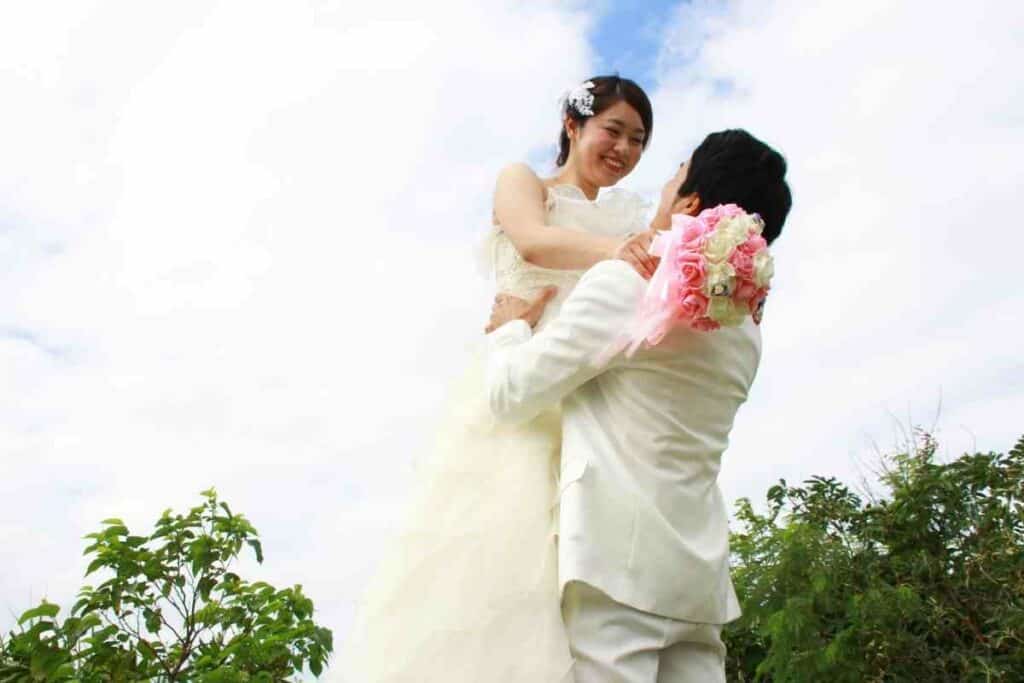
What to Expect? This post will discuss wedding customs you can expect to find in a traditional Japanese wedding today. These include the traditional Japanese wedding dress code, venue, gift, and food. But first, let’s look at why the Japanese wedding traditions are still common and bear more to date.
Table of Contents
Why Are Japanese Wedding Traditions Still Common Today?
Despite the decline in the number of Japanese who get married today, a significant population still cherishes marriage as an important social institution at some point in a human’s life.
According to one consensus in 2010, 58.9% of Japan’s adult population was married.
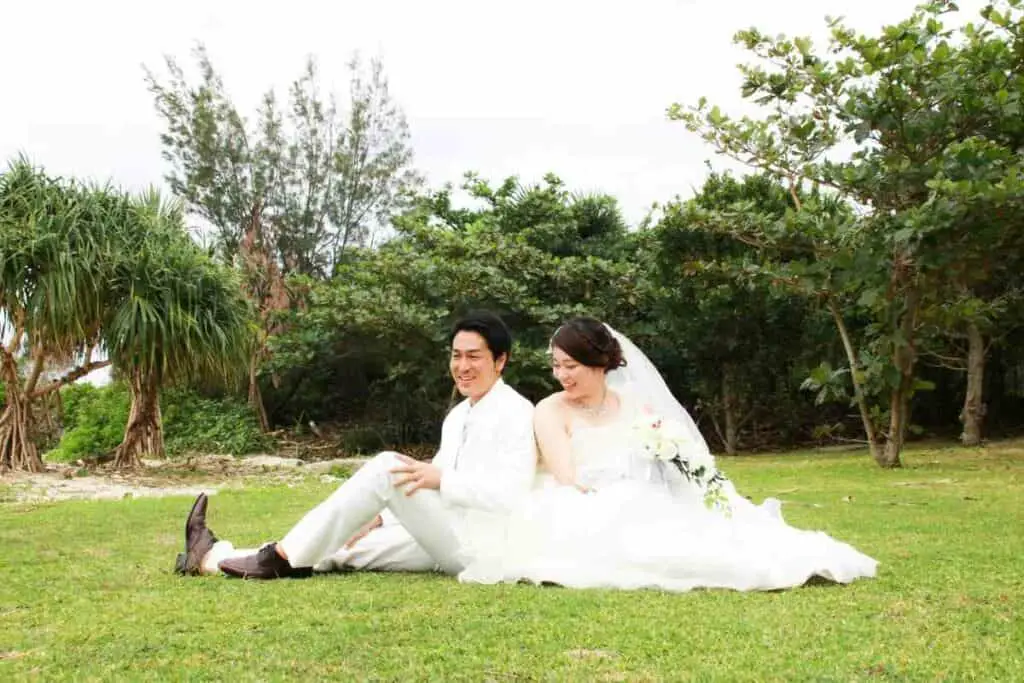
And Japan being one of the few countries determined to preserve their cultural heritage, you’ll still find much traditional Japanese customs spread all over, especially in the remote parts of Japanese islands.
That’s why despite the increased westernization in the pacific Asian countries, many weddings still spot elements of Japanese wedding traditions, especially in dress, food, and gifts.
Dress and Significance
Japanese weddings follow a range of outfits worn by the couple.
However, the choice of the dress code may vary depending on the style of the wedding—Buddhist, Christian, civil ceremony, or Shinto style.
Shinto being the indigenous Japanese faith alongside Buddhism, most Japanese traditional weddings follow the Shinto wedding style.
Here is a dress code you’ll likely see in a traditional Japanese wedding.
Traditional White Kimono
The bride wears a white kimono, also known as shiromuku in Japan.
The white kimono represents the girl’s purity. However, a traditional Japanese bride doesn’t wear a veil. She dons a white hat called wataboshi instead.
The bride changes the kimono into a more colorful dress during the reception. The kimono must be one-piece. According to Japanese traditions, a two-piece kimono or attire is associated with a bad lack.
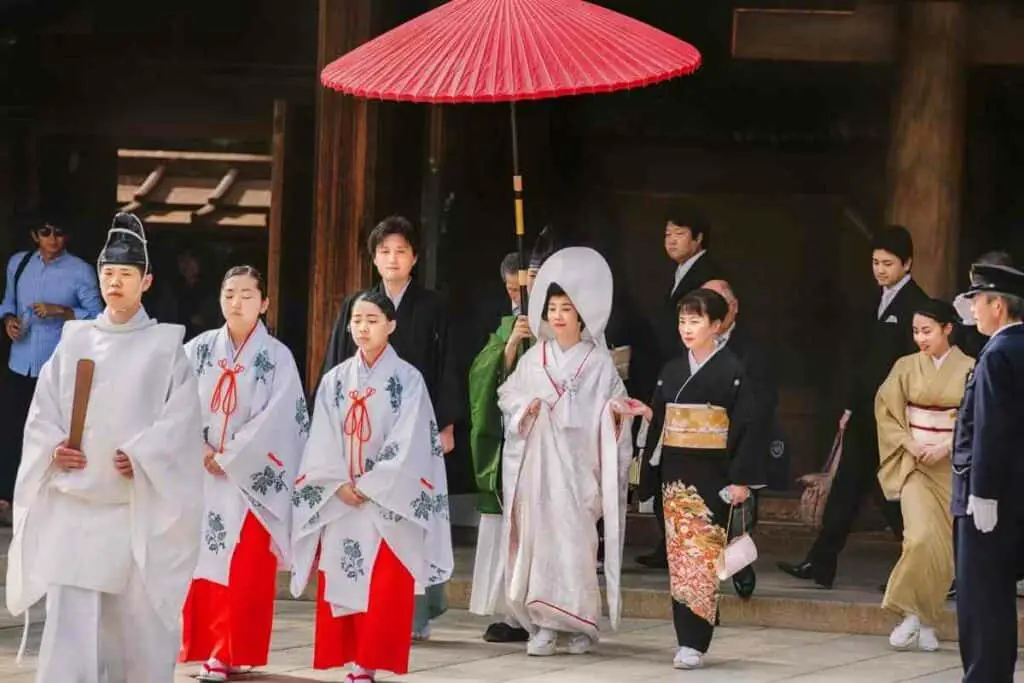
The wedding couple doesn’t wear anything made from animal fur. Animal leather brings memories of life and death according to Japanese culture.
Kimono, also known as shiromuku, remains the signature dress for the bride in all traditional Japanese weddings until now.
Today – Shops all over Japan offer kimonos for rental and other western wedding dresses. So, it’s never a big hassle finding the appropriate dress.
Besides, kimonos are normally cloth wraps, meaning one kimono can fit many different body sizes.
The Wedding Couple Order Relatives’ Clothes
As the couple shops for a shiromuku, they also order for all their relatives that’ll attend the wedding.
These include parents, brothers, sisters, and other close relatives from both sides.
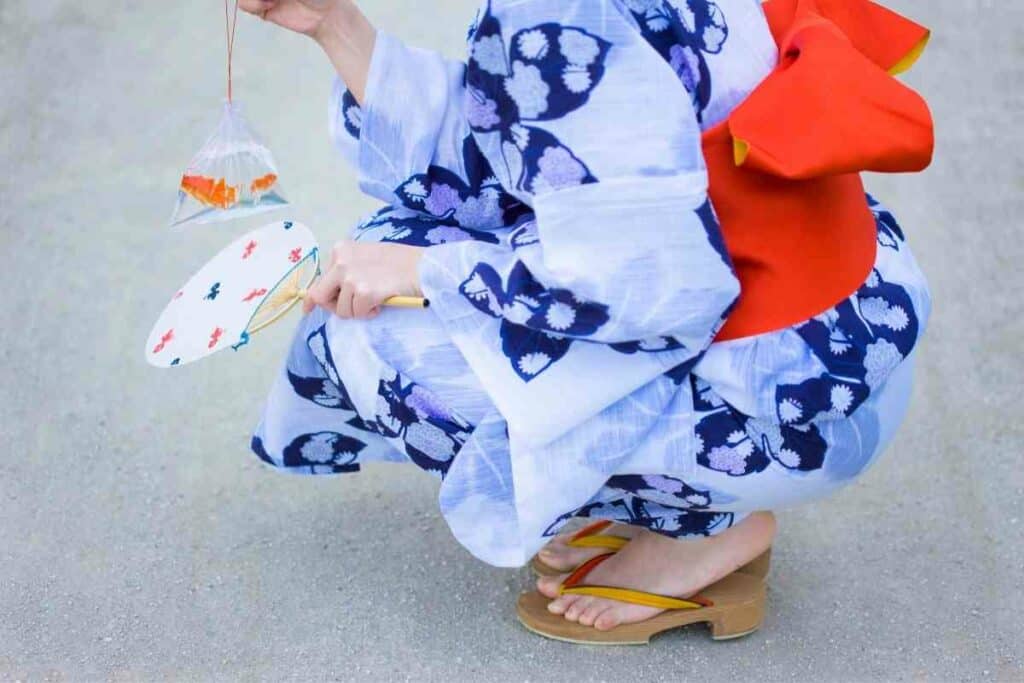
The groom or the couple’s parents pays the rental fee for those who don’t want to buy. The costs may also be shared between the couple’s parents.
The mother wears a black kimono with strips of gold ornaments. The sisters wear marching kimonos, while the dad and brothers are clad in tailcoats.
Dress Changes
Traditionally, the bride wears two different outfits throughout the wedding—a white kimono during the betrothal ceremony and a colorful dress at the reception.
And while two remains the standard, some brides change dresses up to three times during a wedding.
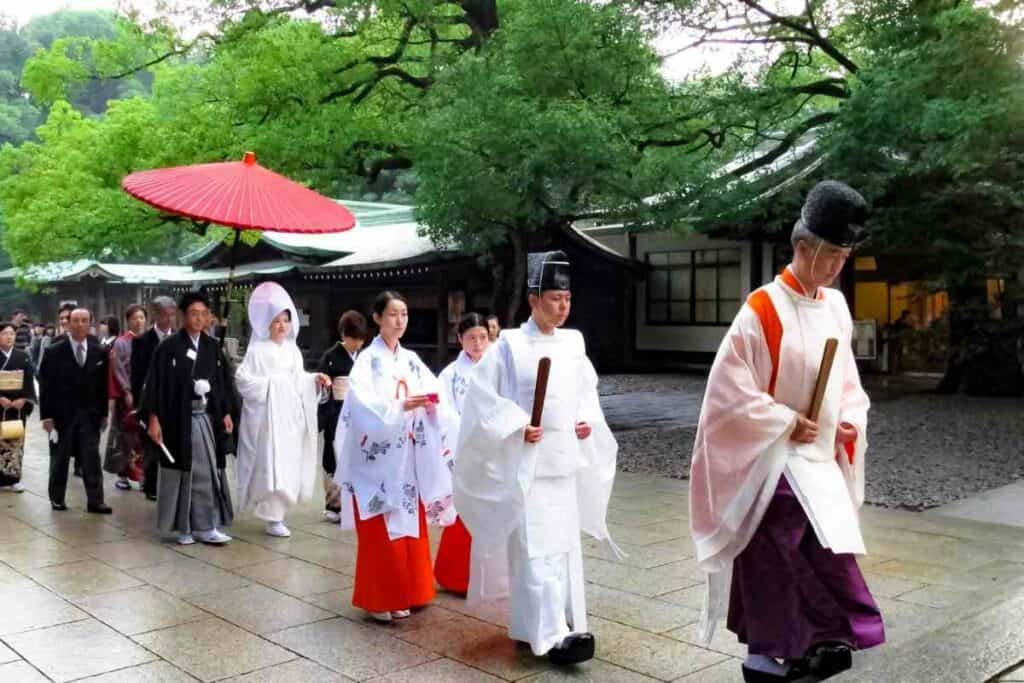
The bridegroom can also change their dress, but many choose to remain in the same outfit throughout the wedding.
The dress change is called oironaoshi and symbolizes the bride’s flexibility to adapt and fit into the groom’s family customs.
The bride also carries a small purse-hakoseko during the ceremony.
In Addition – The fan on the bride’s obi belt symbolizes a happy future as a married couple.
Venue and Wedding Gifts
Choosing the wedding venue is a crucial planning stage in a traditional Japanese wedding.
As a result, some people research the wedding venue even two years before the wedding.
During this stage, the couple shops for the bridal dress and decides on the venue décor.
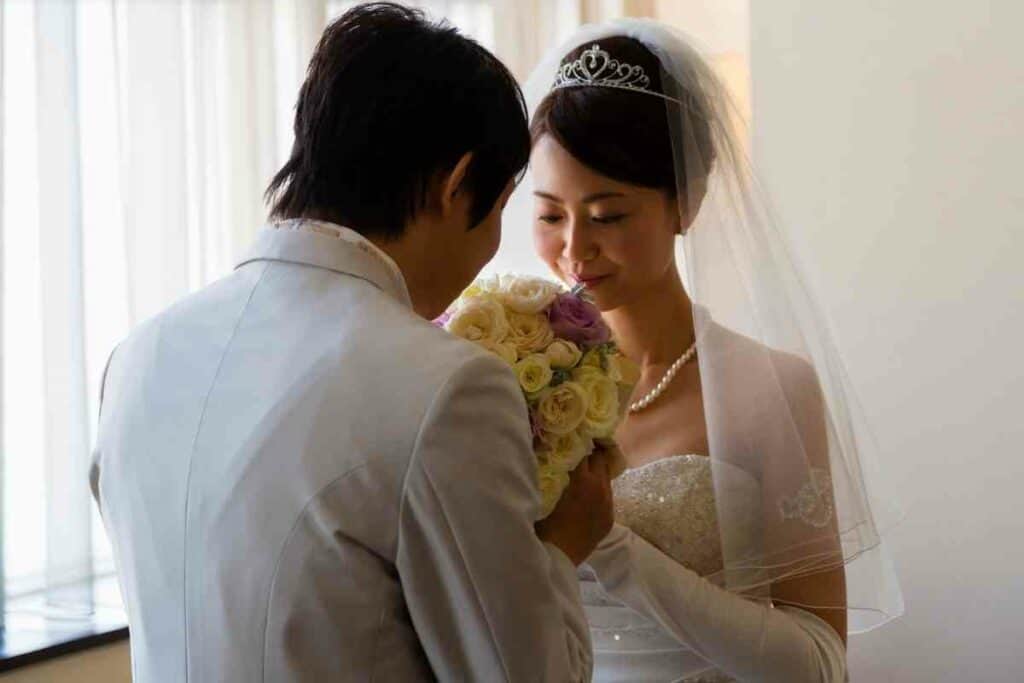
The couple picks on the ceremony venue, reception, and an evening after-party venue for those who prefer to wind down the celebration with an evening of dancing and partying.
But the best part is the venue handles all other things like photography, videography, a florist, and make-up artists once you’ve agreed on the fee.
They also direct the couples to the best bridal shops for wedding dress rentals.
The Shrine
Japanese traditional wedding conducted in a Shinto style takes place at the shrine.
The shrine can be inside a hotel or outdoors on a ranch.
It’s usually a small setting to accommodate only the couple’s family and a few close friends. A Shinto priest officiates over the wedding.
Before the wedding couple drinks from the nuptial cups, the priest purifies them to symbolize spelling away any evil spirits.
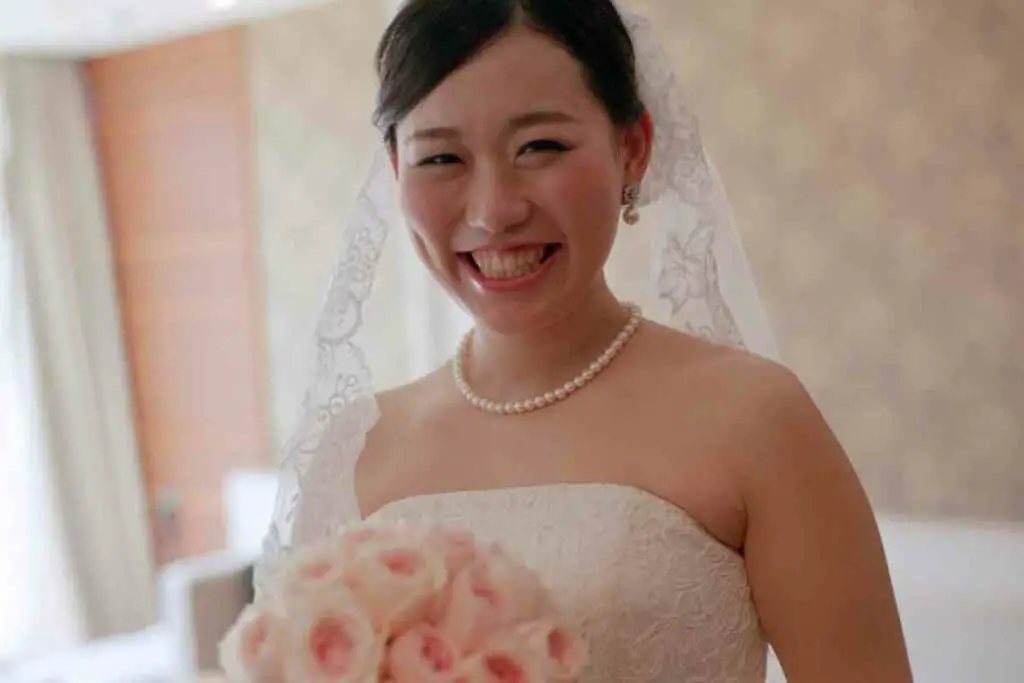
The Japanese wedding couple exchanges rings and make vows at the shrine.
A sake-sharing ceremony is also conducted per the Japanese culture to seal the marriage.
Sake is served in special cups known as sakazuki. The couple drinks three times from three different sakazuki — small, medium, and large.
Each sip has a meaning:
- Small: symbolizes gratitude to the parents for raising you until the point of getting married.
- Medium: shows your commitment to working together with your partner throughout the marriage life.
- Large: Wishes to build a happy family together and pledges eternal love in whatever circumstance.
Parents from both families also take sips in turns to cement the union of the two families.
The ceremony is brief and lasts between 20 to 45 minutes.
The Reception
The reception is the next vital venue the couple chooses.
This is where gifts are exchanged, and people have dinner. The crowd is a little larger as the moment is open to all friends who are willing to join.
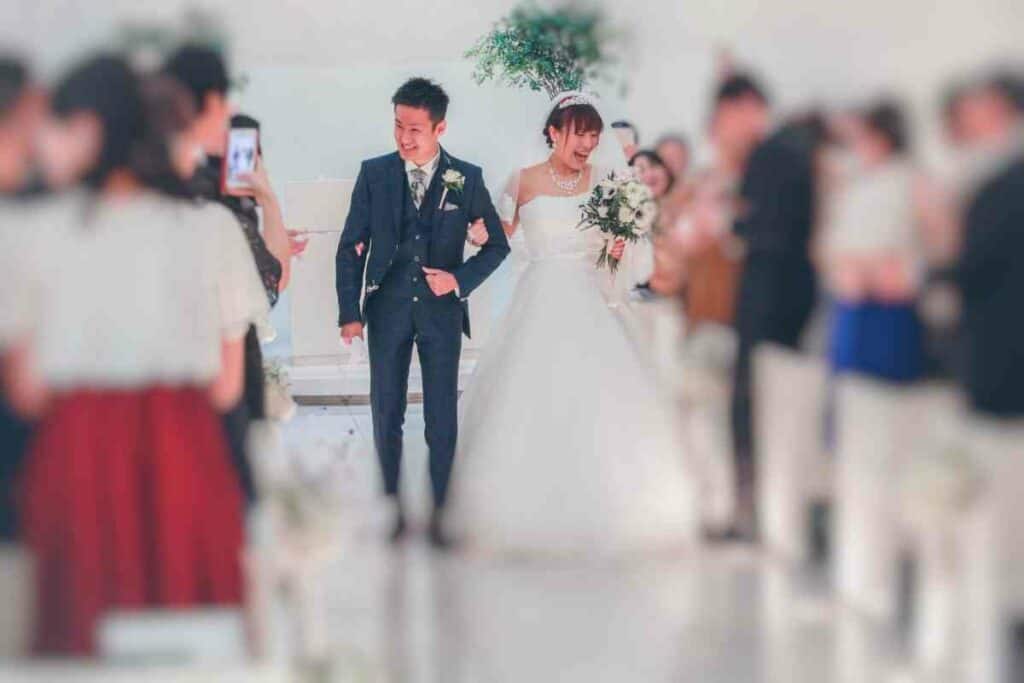
According to the Japanese culture, anyone attending must carry a gift. It can be even the simplest of things like a packet of sweets.
Traditional Japanese weddings are more formal and chilled. Dancing is not a significant part of the wedding.
The Japanese don’t like dancing, and you might not even see the couple performing the typical first dance common in western wedding receptions.
The couple’s parents go around the table holding beer and cheering their children’s new life steps.
Gifts
Monetary gifts are the most common in traditional Japanese weddings.
Guests wrap their cash gifts in a particular type of cloth before presenting them to the newlyweds.
There is a limit on couples and individuals giving cash gifts.
- Typically, guests and friends give about ¥30,000.
- Teachers and bosses give ¥50,000
- While relatives give between ¥50,000 and ¥100,000.
Money that is easily divided by two is discouraged.
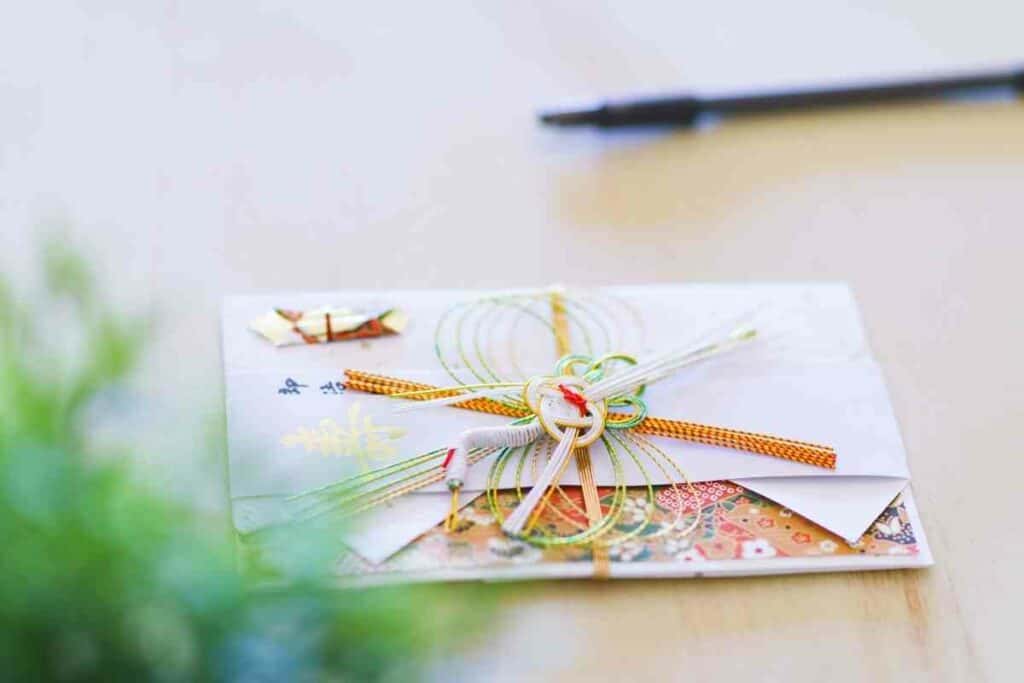
People believe the couple can easily split it and break the essence of a marital union, which promotes oneness.
The wedding couple also offers wedding guests gifts called hikidemono. The gift from the wedding couple is a gesture of appreciation to the guests for their gratitude and hospitality.
It could be a basic gift such as an invitation to evening tea.
In Addition – The couple may give sweets or candles to guests as they leave.
The bride usually presents a letter to her parents.
She reads the letter at the end of the ceremony thanking her parents for their love and care until that moment. It’s usually an emotional letter meant to evoke people’s emotions.
The couple also gift their parents a large flower bouquet to honor them. The reception ceremony is a punctual affair that lasts about two and a half hours at the maximum.
After-Party
The wedding ends with an after-party where friends can join the couple for rounds of sake sharing. You can expect to see a first dance between the bride and groom.
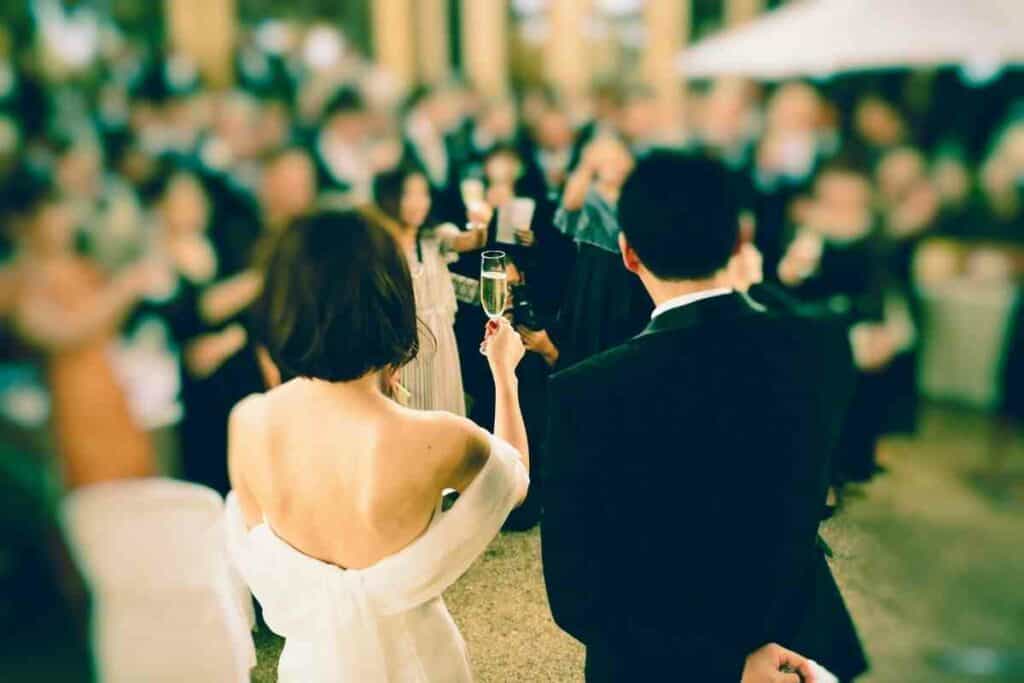
Japanese traditional weddings have been westernized, and you may notice a few people, including the newlyweds, dressed in western styles and colors such as red, white, and black.
It’s also customary for newlyweds to pay part of the guests’ transportation expenses, especially those from far away.
Those who come from abroad are also offered accommodation.
Note – Unlike most Western weddings that occur on Saturday afternoons, traditional Japanese weddings are mainly conducted on Sunday around lunchtime. Then there is an afternoon lunch reception.
Food
Japanese traditional weddings serve many different courses throughout the wedding celebrations. Each food and drink served has a special meaning.
No food or drink is served in multiples of four. Four is an unlucky number associated with death and a bad omen.
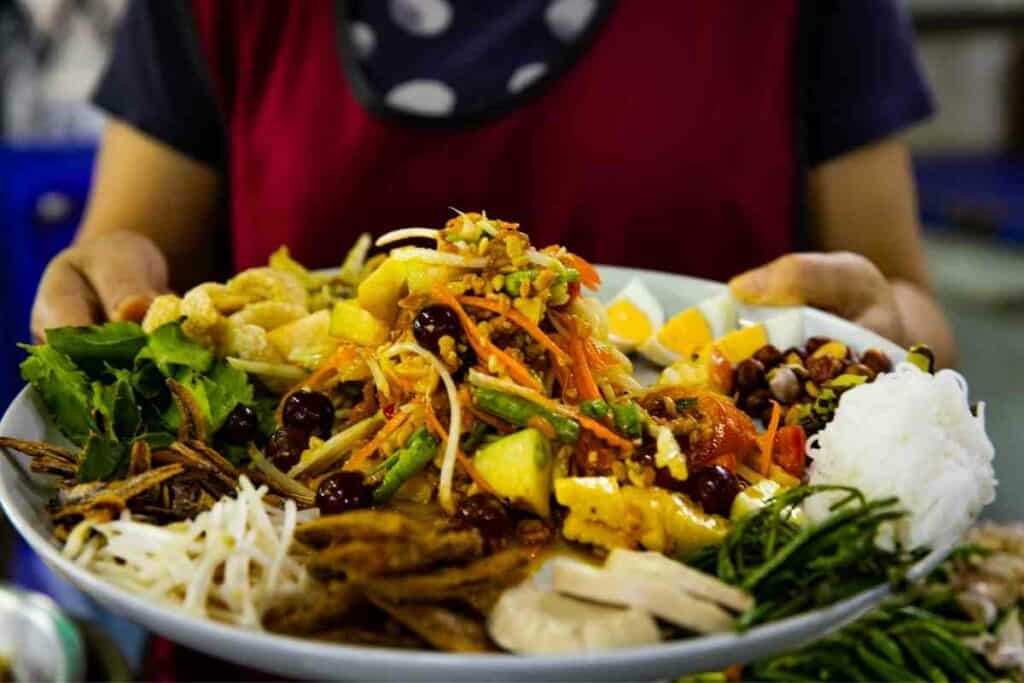
Here are food ceremonies in traditional Japanese weddings and their significance.
Cutting of the Cake
Cake-cutting may sound modern and borrowed from western weddings, yet it’s a practice that has existed in traditional Japanese weddings since ancient times.
The ceremony is a little different from how many modern weddings are conducted.
An imposter cake made from ground steamed rice is used. The cake is usually covered with red bean powder, which acts as toppings.
The cake on display is meant for just the bride and her new spouse. However, a separate cake is usually ready backstage for the guests.
Guests are served cake on garnished plates as appreciation.
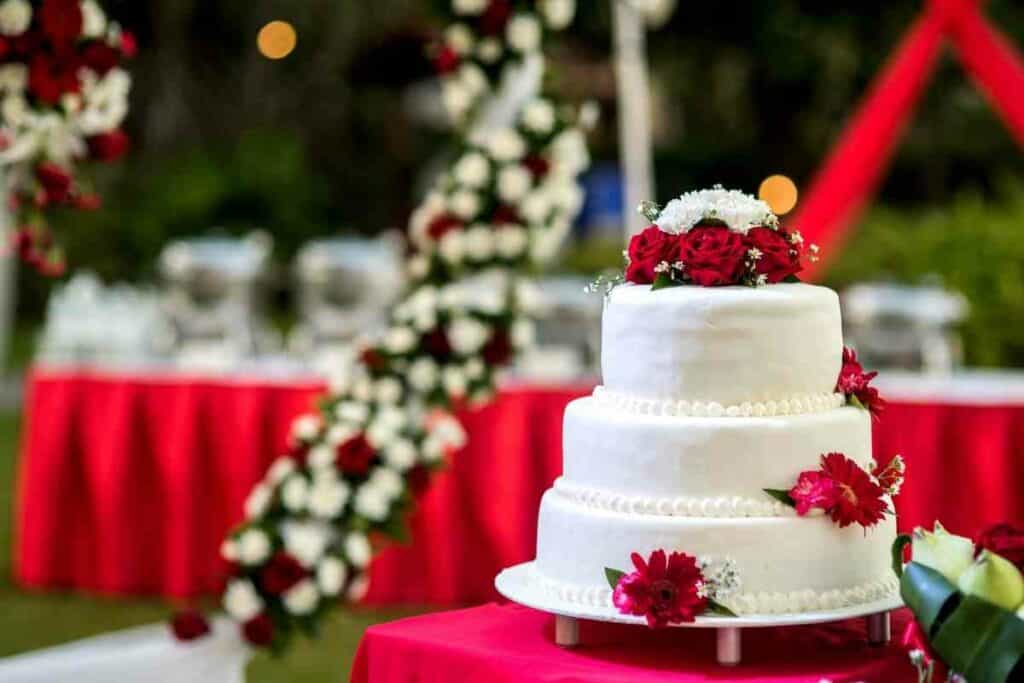
Apart from the red bean powder topping, some cakes are decorated with tasty desserts, including:
- macaroons
- chocolate
- and custards
You’ll also find a tiered sponge cake, usually covered in non-dairy cream.
Japan is the land of Samurai, so a ceremonial sword is usually used to cut the traditional Japanese cake.
It’s a great moment where the bride and the groom showcase their deep love only comparable to a samurai’s sword.
Reception Dinner
The reception dinner marks the epitome of the traditional Japanese wedding.
Unlike in the wedding ceremony at the shrine, where a handful of the couples’ close relatives attend, friends can join in the celebrations at the reception.
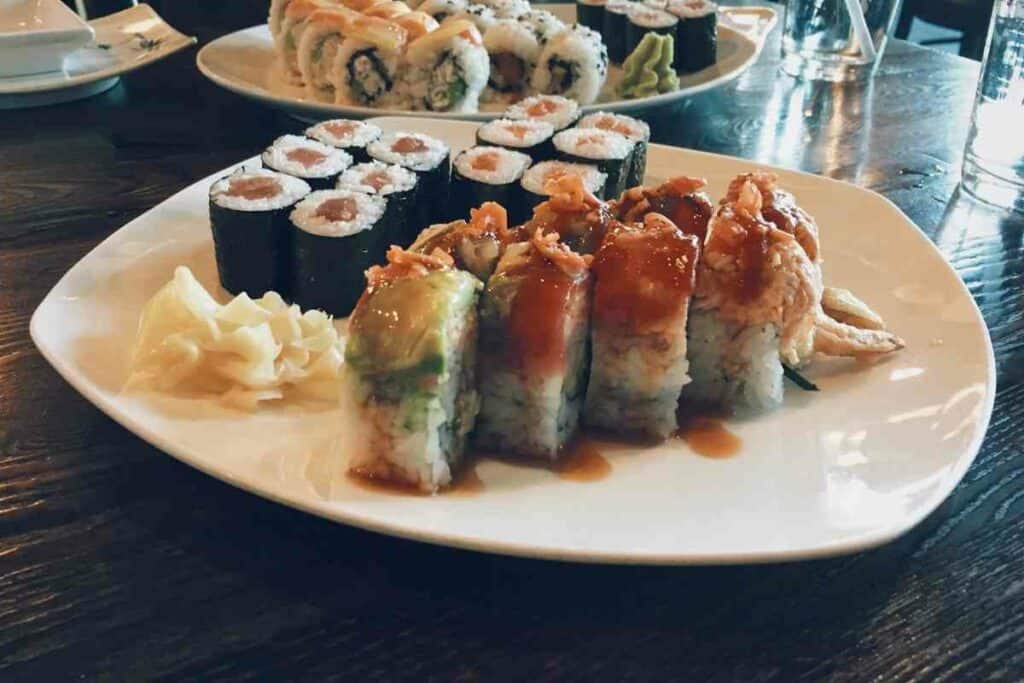
Colorful sushi comprising all the courses is displayed and served to everyone. Each food has a special meaning according to Japanese customs.
For Instance – Lobsters are served to symbolize luck in their red color. Clams are also served with both shells as a sign of the couples’ union. Typically, the celebration starts with fish dishes.
Other delicacies served at the reception dinner include red rice, brown algae, and prawns.
Meat is rare in traditional Japanese weddings.
Eating meat has been taboo in Japan for decades, although some Japanese weddings now include them in their courses.
The Japanese herring roe or kazunuko is a special meal in traditional Japanese weddings.
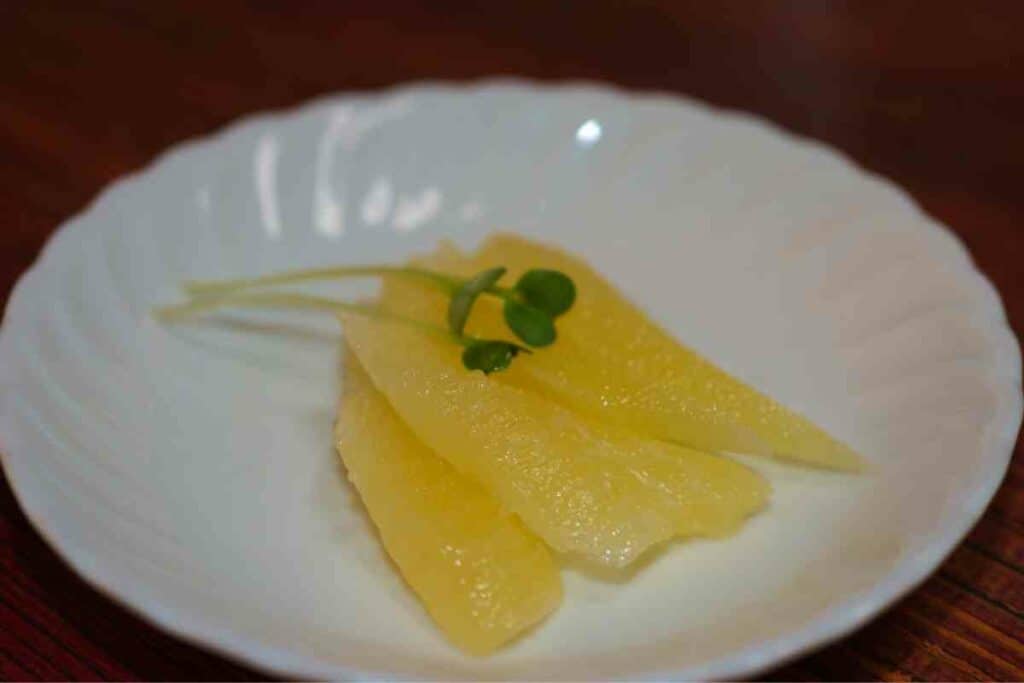
Kazunuko is a delicious pinkish fish egg, usually dried in the sun and served to couples during the wedding. The eggs symbolize fertility and prosperous life.
Sake opening is another remarkable celebration at the reception dinner or evening party.
Apart from the sake that the couple shares at the shrine, a second sake for all guests is usually served at the reception.
The sake barrel’s lid is burst open as everyone cheers before it’s served. The Japanese call it kagami-biraki.
Wrapping Up
Western religion is increasingly influencing traditional Japanese weddings.
Still, they manage to keep a few important elements of a conventional wedding established by their forefathers.
The most notable cultural practices to date include the dress code, types of foods, and their significance.
Symbolism in everything during a traditional Japanese wedding tradition bears utmost importance.
The Japanese newlyweds also don’t go on honeymoon. There’s no vacation to travel to a faraway place to bond, as is common in western weddings.
Most weddings happen on Sunday, but on Monday, the following day, people report to work.
Although times are changing and many Japanese couples now overlook these customs, they remain relevant to many Japanese people.
The event is more memorable and gives the newlyweds a societal sense of belonging.
Also Read
- 12 Things Tourists Should NEVER Say in Japan
- Kissing Robot: Exploring the Popularity of the Chinese Kissing App
- Unlocking the Secret Dating Rituals Only Locals Know in Japan
- Samurai Armor: Ancient Protection for Japan’s Elite Warriors
- 10 Amazing Facts About Schools in Japan: Unique Traditions and Educational Practices
- Where can you see snow monkeys in Japan: Best locations and viewing tips









